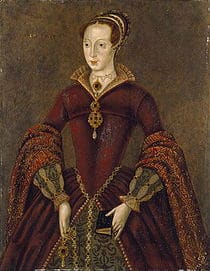 On 13th November 1553, Lady Jane Grey, her husband Guildford Dudley, his brothers Ambrose and Henry, and Archbishop Thomas Cranmer were tried for treason at a public trial at London’s Guildhall. They were led from the Tower of London, through the streets on foot, in a procession led by a man carrying an axe turned away from the prisoners, to show that they had not yet been found guilty of a capital crime: treason.
On 13th November 1553, Lady Jane Grey, her husband Guildford Dudley, his brothers Ambrose and Henry, and Archbishop Thomas Cranmer were tried for treason at a public trial at London’s Guildhall. They were led from the Tower of London, through the streets on foot, in a procession led by a man carrying an axe turned away from the prisoners, to show that they had not yet been found guilty of a capital crime: treason.
The trial opened with a Catholic liturgy and the commission chosen to try Jane and the men was headed by Sir Thomas White, the Lord Mayor, and also the Duke of Norfolk, both staunch Catholics. Jane, Guildford, Ambrose, Henry and Cranmer were all charged with high treason. Jane and Guildford were charged with treason for taking possession of the Tower of London and proclaiming Jane as queen, Cranmer was charged with proclaiming Jane as queen and sending forces to Cambridge, and Jane was charged with ‘signing various writings’ as queen.
Cranmer, at first, pleaded ‘not guilty’, but after the case had been presented, and before the jury delivered their verdict, he changed his plea to ‘guilty’, like the others. They were all found guilty as charged, with the men being sentenced to being hanged, drawn and quartered, and Jane to be burned alive, or beheaded. Michel Angelo Florio recorded that Jane remained cool and calm during the proceedings, and did not react at all to the sentence.
Lady Jane Grey and Guildford Dudley were executed on 12th February 1554.
You can read a more detailed account of the trial in my article The Trial of Lady Jane Grey.
(Extract from On This Day in Tudor History by Claire Ridgway)